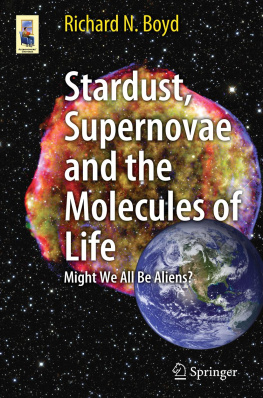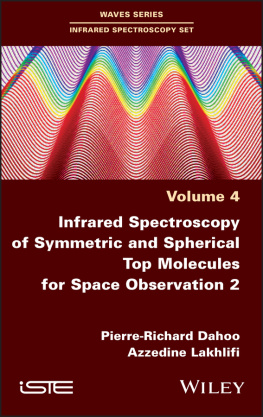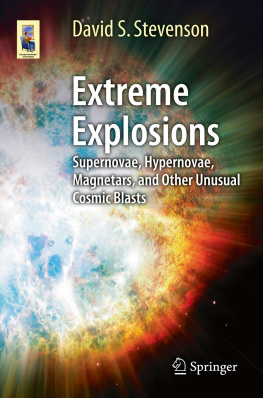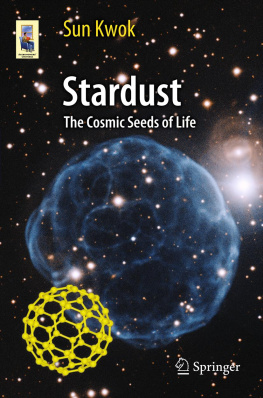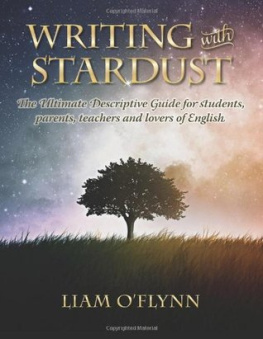Richard N. Boyd Astronomers' Universe Stardust, Supernovae and the Molecules of Life Might We All Be Aliens? 10.1007/978-1-4614-1332-5_1 Springer Science+Business Media, LLC 2012
1. Introduction
1.1 In the Beginning
This book is about origins. Its primary focus is on the origin of life on Earth, or at least on the molecules from which life grew, and perhaps in other places in the Galaxy. But that didnt happen first; the Universe had to get started via the Big Bang, then it had to make the elements that were not made in the Big Bang (and thats nearly all of them!), then the Solar System and Earth had to be created, and then finally, we can consider the origin of life on Earth. And if you hadnt guessed yet, this will be from the perspective of modern science.
The Universe was born 13.7 billion years ago. The age of the Universe is incontestable. It has been determined by a couple of incredibly elegant experiments. The values they get for that age are determined by completely independent, and different, techniques, and they agree extremely well. These experiments are so important that I want to describe some of their details, so they will be discussed in .
The Earth was born 4.55 billion years ago. The elements that exist on Earth, all the carbon, oxygen, silicon, iron, indeed everything except hydrogen and helium, were produced in stars that existed prior to the formation of our Solar System. Because the Universe is so much older than the Earth, those elements are thought to have been produced in several previous generations of stars.
The Earths age I gave you above is also incontestable; there are at least two ways to determine the Earths age, and they are consistent with each other. One technique establishes a lower limit on the Earths age of around 4 billion years by dating the oldest rocks found on Earth. Radiocarbon dating is the most common form of this technique, but we are dealing with ages in the billions of years, and the half-life of 14C, the radioactive isotope of carbon, is much too short (5,730 years) to allow a meaningful measurement of that long an age (the maximum for carbon dating is about 100,000 years). Determining long past ages using radioactive nuclei is a well-established technique; it has been applied to determination of the age of the Universe [, provide a much more accurate answer.
For our present purposes, Nature has provided us with a wonderful crystal: Zirconium Silicate, ZrSiO4. Zircons have been found, when they crystallize from magma, to contain uranium (U), but they do not contain lead (Pb) when they crystallize. 204Pb (82 protons, 122 neutrons) is a decay product of 238U (92 protons, 146 neutrons), and 205Pb (82 protons, 123 neutrons) is a decay product of 235U (92 protons, 143 neutrons). Thus the zircons provide a very direct way to measure the Earths age: measure the abundances of the lead isotopes in rocks that also contain Uranium. The two U isotopes have extremely long half-lives (0.704 billion years for 235U; 4.468 billion years for 238U), and they are known to high accuracy. As the 235U and 238U decay, the amounts of 204Pb and 205Pb in the sample increase. So by measuring the amounts of 204Pb and 205Pb, and comparing those to the amounts of 235U and 238U, one can determine the age of the rock. The oldest rock appears to have sufficient zircon inclusions to suggest that it is more than 4 billion years old.
How sure are we that this technique is giving correct answers? The results only depend on the half-lives and the accuracy of the abundance measurements. Many tests have been conducted to see to what extent extreme conditions, e.g., the high temperatures encountered in the early Earth, could influence these half-lives. The answer is that such influence is well below the very small uncertainties in the half-lives, and the largest influences (which are still very small) occur in nuclei that decay by a different mechanism than do the U nuclides (the word nuclides refers not to just the elements, but to all the isotopes of the elements). Of course, the dating approach can only tell the ages of the rocks; it therefore provides only a lower limit on the age of the Earth. There are other ways to determine the age of the Earth; the number that one achieves with all these techniques is 4.55 billion years [].
Before leaving the dating story, I should mention that the zircons can also provide an age on life forms that are found in ancient rocks. Unfortunately, the fossils are found in sedimentary rock, and the zircons are definitely not sedimentary rock. However, some sedimentary rock that contained fossils was also found to contain zircons. If the zircons were included in the sedimentary rock at the same time the fossils were entombed therein, then the age would be easy to determine. However, the zircons may well have been added to the sedimentary rock only after they had existed for a while. Moorbath [] has estimated that the fossils in these rocks are 3.673.70 billion years old. Ive left out the details, but their ages are very well established.
So what was the Earth like initially? It was a pretty miserable place by any standards. It didnt resemble the current version very much, as it was very hot, had essentially no atmosphere and very little water, and was being continually bombarded by meteorites. Those meteorites are important; they will play a central role in our story. However, in the early history of the Earth, they would have made our planet a pretty unpleasant place to be. In fact, it would have been uninhabitable, as huge meteorites would have created enormous displacements of material, the clouds from which would surely have extinguished any life that might have survived the unbearable temperatures. How do we know this? The Moon was presumably subjected to the same bombardment, and its cratered surface tells us that this was the unfortunate situation for the unfortunate early Earth. This situation has been studied by Sleep et al. [], among others.
However, this intense meteoritic bombardment ceased about 3.7 billion years ago, again from the evidence we get from the Moon. Although an occasional meteorite still does make it to Earth, their number was greatly reduced from that of the earlier period. Why did this change come about? It appears that Jupiter served as a cosmic janitor. Because its large size, it exerts a huge gravitational pull on objects that come close to it, and that gravitational pull on the objects it encountered as it circled the Sun allowed it to sweep out most of the debris that was originally floating about the inner Solar System. This made it possible for any life that might arise on Earth after the cosmic cleanup was completed to flourish and evolve without too much concern for large scale planetary destruction, although that can still occur from hits from large meteorites that were missed in the Jovian sanitation of the Solar System. Incidentally, it apparently took Jupiter more than a billion years to complete its cleanup of the meteoroids in the inner Solar System.

